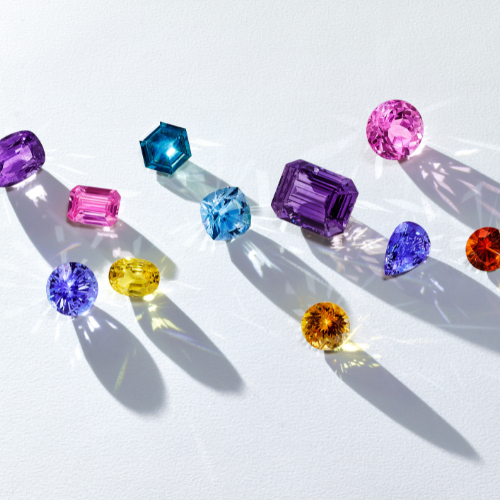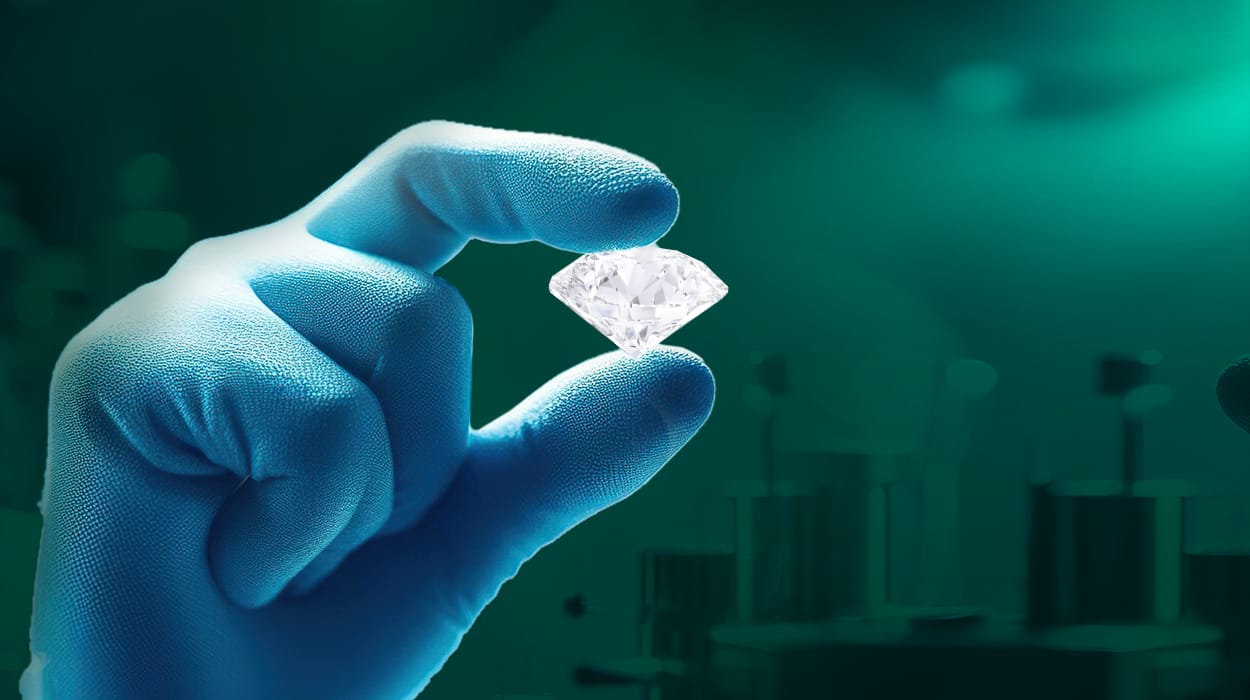
How to Use the Diamond 4 C’s Chart to Choose the Perfect Diamond
What Are the 4 C’s of Diamonds?
The 4 C’s are the key criteria that professionals use to evaluate the quality of diamond 4 c chart. Let’s take a look at each one:
Cut
The cut of a diamond refers to how well the diamond has been shaped and faceted. The quality of the cut is arguably the most important factor because it directly impacts how a diamond reflects light and, therefore, its brilliance and sparkle. The better the cut, the more the diamond will shine.
Color
Diamond color refers to the presence of color within the stone, with diamonds being graded on a scale from D (colorless) to Z (light yellow or brown). The less color a diamond has, the more valuable it is. However, most diamonds appear white to the untrained eye, so the difference between, say, a D and an F can be minimal unless you’re really examining the diamond closely.
Clarity
Clarity measures the presence of inclusions (internal flaws) and blemishes (external flaws). The fewer inclusions a diamond has, the more valuable it tends to be. A flawless diamond is rare, and even diamonds with slight inclusions can still look stunning to the naked eye.
Carat Weight
Carat weight measures how much the diamond weighs. One carat equals 0.2 grams. The more a diamond weighs, the larger it typically is, and the more expensive it can become, especially if it also scores well on the other C’s.
Understanding the Diamond Cut
Why Cut Matters the Most
When people talk about the brilliance and sparkle of a diamond, they’re usually referring to its cut. A well-cut diamond will capture and reflect light in the most spectacular way, creating that signature sparkle that catches the eye. A poorly cut diamond, even if it has excellent color and clarity, may appear dull or lifeless.
The Different Types of Diamond Cuts
Diamonds come in various cuts, each offering a different look and feel. Here are the most common:
Round Cut
The round cut is the most popular and timeless diamond shape, known for its ability to reflect light beautifully. It is often considered the standard for diamonds and is the most sought-after shape for engagement rings.
Princess Cut
The princess cut is a square or rectangular shape with pointed corners. This cut offers a modern, geometric look and also displays a great deal of sparkle.
Emerald Cut
The emerald cut features long, rectangular facets, creating a striking “hall of mirrors” effect. This cut tends to emphasize a diamond’s clarity, making it a great choice for diamonds with few inclusions.
Asscher Cut
The Asscher cut is similar to the emerald cut but is square, with a deep pavilion and step-like facets. It’s elegant and vintage-inspired, perfect for those who want something different from the more traditional cuts.
Cut Grading: How It’s Determined
Diamonds are graded for cut quality on a scale that includes Excellent, Very Good, Good, Fair, and Poor. A diamond’s cut is graded based on factors like proportions, symmetry, and polish. An excellent cut will showcase a diamond’s brilliance, while a poor cut can make even a high-quality diamond appear dull.
Understanding Diamond Color
The Diamond Color Scale
Diamonds are graded on a color scale from D to Z, with D being the most colorless and Z having noticeable color (usually yellow or brown). The closer a diamond is to colorless, the more valuable it is.
- D-F: Colorless (highest quality)
- G-J: Near colorless
- K-M: Faint yellow
- N-Z: Light yellow to brown
Why Color Affects Diamond Value
Color affects a diamond’s appearance, with the less color it has, the more it shines and sparkles. Diamonds with little to no color tend to be rarer and more expensive, while diamonds with noticeable color are often more affordable. However, many people don’t notice the difference between, say, a G and an H diamond unless they are closely examined side by side.
How to Choose the Best Color for Your Budget
Choosing the right color depends on your personal preferences and budget. If you prefer a diamond that looks colorless but don’t want to pay for the most expensive grade, diamonds in the G-H range are excellent options, offering a balance of value and beauty.
Understanding Diamond Clarity
What Is Diamond Clarity?
Clarity refers to the presence of inclusions (internal imperfections) and blemishes (external imperfections) in a diamond. Inclusions are natural occurrences in diamonds that form during their creation. The fewer inclusions a diamond has, the clearer and more valuable it is.
The Clarity Scale
Diamonds are graded on a clarity scale that ranges from Flawless (FL) to Included (I1, I2, I3). Here’s the breakdown:
- FL (Flawless): No internal or external flaws visible under 10x magnification.
- IF (Internally Flawless): No internal flaws, but minor external blemishes.
- VVS1/VVS2 (Very, Very Slightly Included): Extremely small inclusions that are difficult to detect even under magnification.
- VS1/VS2 (Very Slightly Included): Minor inclusions that are noticeable only under magnification.
- SI1/SI2 (Slightly Included): Inclusions visible to the naked eye in some diamonds.
- I1/I2/I3 (Included): Inclusions that are visible to the naked eye and may affect the diamond’s appearance.
What Are Inclusions and How Do They Affect Quality?
Inclusions can be anything from tiny crystals to fractures within the diamond. The fewer inclusions a diamond has, the higher its clarity grade. While inclusions don’t always affect a diamond’s sparkle, they can influence its overall appearance. Choosing a diamond with fewer inclusions often leads to a better-looking stone.
How to Choose the Right Clarity for Your Needs
While flawless diamonds are highly valuable, they’re also rare and expensive. Most buyers opt for lab grown diamonds with a VS or SI grade, as these stones may still appear flawless to the naked eye but come at a more reasonable price.
Understanding Carat Weight
What Is Carat Weight?
Carat weight is the measurement of how much a diamond weighs. One carat is equivalent to 0.2 grams. While carat weight is a key factor in determining the size of the diamond, it’s not the only thing that matters. Two diamonds of equal carat weight can have different values depending on their cut, clarity, and color.
Does Carat Weight Determine Diamond Size?
Carat weight is often associated with the size of the diamond, but it’s important to note that the cut can also affect how large a diamond looks. A well-cut diamond can appear larger than a poorly cut diamond of the same carat weight.
How Carat Weight Affects Price
The price of a diamond increases exponentially with its carat weight. As diamonds grow in size, they become rarer, and therefore, more expensive. However, sometimes the price increases more due to other factors like cut or clarity than from carat weight alone.
The Diamond 4 C’s Chart: A Visual Breakdown
How to Use the 4 C’s Chart
The Diamond 4 C’s Chart is a helpful tool for understanding how different diamonds compare based on their cut, color, clarity, and carat weight. When shopping for a diamond, you’ll want to balance the different factors to find a diamond that fits both your preferences and your budget.
How the 4 C’s Influence Diamond Pricing
The 4 C’s directly influence diamond pricing. Generally speaking, diamonds with higher grades for each of the C’s are more expensive, but there are always trade-offs. For instance, you might find that a diamond with an excellent cut and good color offers better value than a larger diamond with lower clarity.
Tips for Buying the Perfect Diamond
Balancing the 4 C’s with Your Budget
While you may want a diamond with the highest grades for all the C’s, it’s important to balance your preferences with your budget. Prioritize the C’s that matter most to you—whether that’s cut, color, clarity, or carat weight—and adjust the others accordingly.
Using the 4 C’s Chart for Comparison
When comparing diamonds, use the 4 C’s Chart to understand how each diamond stacks up. It’s helpful to see how different diamonds of varying grades and cuts compare in size, quality, and cost.
Should You Prioritize Cut, Color, Clarity, or Carat Weight?
Ultimately, the most important C for most buyers is cut because it directly influences how the diamond will look. Color and clarity can be adjusted based on your budget, while carat weight depends on the size you want.
Common Misconceptions About the 4 C’s
Do Higher C’s Always Mean Better Quality?
Not necessarily. While higher C’s can indicate better quality, it’s essential to consider your personal preferences. A diamond with a slightly lower clarity grade, for example, may look just as beautiful as a flawless diamond but at a fraction of the price.
The Importance of Personal Preference
The 4 C’s are just guidelines—they’re not one-size-fits-all rules. What matters most is what appeals to you. If you prioritize size over clarity or prefer a specific cut, those preferences will guide your choices.
Conclusion: Understanding the 4 C’s Helps You Make Informed Choices
Navigating the world of diamonds can be daunting, but with the Diamond 4 C’s Chart as your guide, you’ll be able to make an informed decision based on your personal preferences, budget, and the specific characteristics you value most. Whether you’re shopping for an engagement ring or a statement piece, understanding the 4 C’s will help ensure you choose the diamond that’s perfect for you. Happy diamond shopping!








